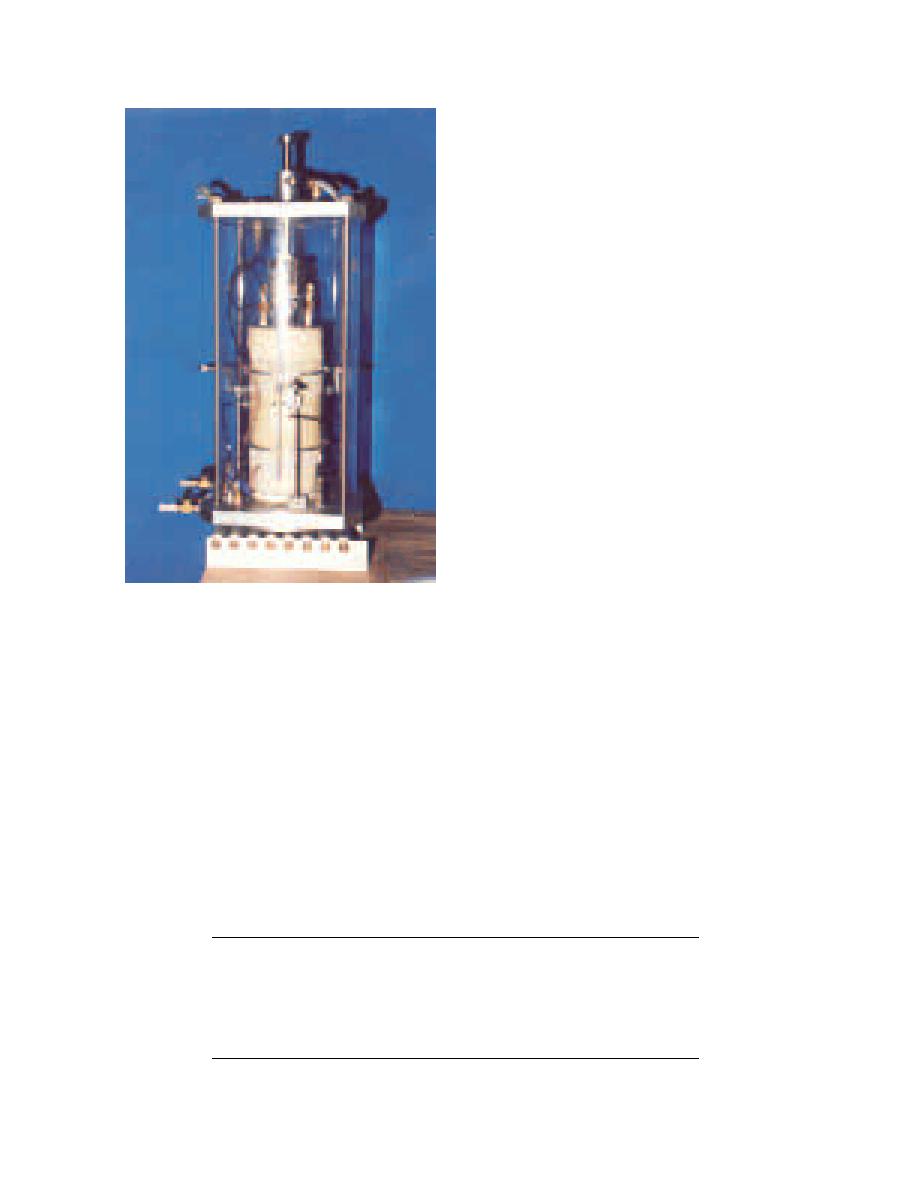
Although most of the resilient modulus tests
were conducted at optimum moisture content, a
limited number were conducted at the saturated
water content to determine the effect of moisture
content. In addition, shear strength and hydro-
static tests were also conducted for some of the
soils at the optimum water content. Table 3 shows
the soil types, moisture content, density, and types
of tests conducted. The test moisture and densi-
ties used were the optimum moistures and densi-
ties provided by NHDOT. The exception to the
above is the coarse gravelly sand. For the coarse
gravelly sand (NH3), we found that, when the
specimens were compacted at the optimum mois-
ture content (9.5%) provided by the NHDOT, the
water drained rapidly and collected at the bottom
of the specimen. For these samples, we continued
making the specimens at 9.5% but allowed the
water to drain before the beginning of the resil-
ient modulus test. At the end of the test, the mea-
sured moisture content was approximately 3%.
RESULTS AND DISCUSSION
The discussion will focus on the results from
the resilient modulus tests at optimum moisture
Figure 4. Typical sample setup.
content. There is insufficient information at this
time to conclude on the effect of moisture content
on the effective resilient modulus. As for the shear
Table 2 shows the testing sequence used most
and hydrostatic tests (Tables 4 and 5), the results
of the time at the different temperatures. A descrip-
were planned to be used for predicting the amount
tion for the CRREL and AASHTO test methods
of subgrade rutting during the spring thaw pe-
are presented in Appendix B. The testing was done
riod. However, at this time additional testing is
in a cycle. The samples were initially conditioned
required.
at room temperature and tested at room tempera-
Tables 6 to 10 present the resilient modulus re-
ture. Then they were frozen and tested at the dif-
sults for the various soils as a function of tempera-
ferent frozen temperatures. The samples were
thawed from 10C to room temperature and
ture, confining pressure, and deviator stress. How-
ever, since the current AASHTO design uses a
tested at the intermediate temperatures.
Table 2. Testing sequence protocol used in the resilient modulus test.
Test
temperature
Subgrade
Base/subbase
(C)
material
material
10
CRREL
CRREL
5
CRREL
CRREL
2
CRREL/AASHTO (TP 46-94) Table 1*
CRREL
0.5
AASHTO (TP 46-94) Table 1
AASHTO (TP 46-94) Table 2
+0.5
AASHTO (TP 46-94) Table 1
AASHTO (TP 46-94) Table 2
+5
AASHTO (TP 46-94) Table 1
AASHTO (TP 46-94) Table 2
+20
AASHTO (TP 46-94) Table 1
AASHTO (TP 46-94) Table 2
*For the marine clay, AASHTO TP 46-94 Table 1 was used.
5



 Previous Page
Previous Page
